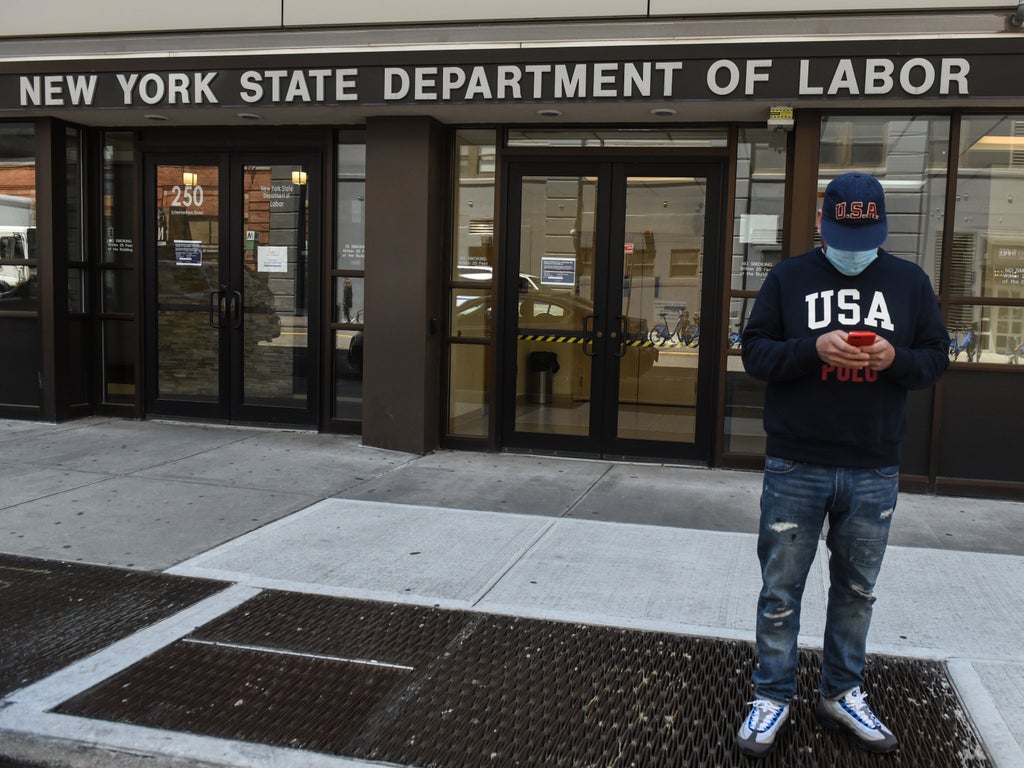
The US Department of Labor has reported that 428,000 jobs were added to the labour market during the month of April as the economy continues to recover from the Covid-19 pandemic.
The number of jobs added last month is the same as the revised figure for March, with the unemployment rate remaining at 3.6 per cent.
US economist at Oxford Economics Oren Klachkin told The New York Times that “the job market is proving to be a key source of resilience for the economy. Job creation will eventually settle into a slower pace as businesses feel the pinch of soaring inflation and tighter financial conditions, but gains will stay healthy”.
“We think the economy has enough strength to create over four million jobs this year”, he added.
The American economy has gained back over 90 per cent of the 22 million jobs that were lost as the country went into lockdown when the pandemic began in the spring of 2020.
The participation rate in the labour force has bounced back faster than many observers expected, getting closer to levels seen before the pandemic.
The number of available workers hasn’t kept up with the pace of open jobs as businesses once again expand to meet rising demand. This has led to pay increases with the April review showing that the average hourly pay was 5.5 per cent higher compared to a year before. But the increases have mostly been matched by inflation and rising prices.
Rising inflation started last spring when demand from both households and businesses coincided with a messy reordering of the supply of workers and goods. This has lasted longer than the Federal Reserve anticipated.
Prices have also been affected by the Russian invasion of Ukraine. The energy and commodity markets have been thrown into chaos and supply chains have been affected by new Covid lockdowns in China.
The central bank has responded by raising interest rates to cool down the economy, including consumer spending, business lending, and labour demand. A recession and decreasing job numbers could be prompted by borrowing costs reaching what officials refer to as “restrictive levels”, according to The New York Times.
A number of observers think that rising business costs and labour supply problems may lead to job gains slowing down.
Goldman Sachs chief economist Jan Hatzius recently indicated that job growth would drop to 200,000 a month and continue to slow from that level.
President Joe Biden issued a statement on the April jobs report on Friday, saying that “the economy created 428,000 jobs in April – bringing the total number of jobs created since I took office to 8.3 million”.
“The unemployment rate now stands at 3.6% —the fastest decline in unemployment to start a President’s term ever recorded. There have been only 3 months in the last 50 years where the unemployment rate in America is lower than it is now,” he added.
“When I took office, there were around 20 million people relying on unemployment benefits to feed their families; today, that number is around 1 million – the lowest since 1970,” he said.
House Speaker Nancy Pelosi said that “as Americans confront [Russian President Vladimir] Putin’s Price Hike, the Democratic Congress is advancing legislation to lower prices at the pump, including by holding Big Oil accountable for price gouging and war profiteering”.
“House Democrats are also working to lower food costs, shining a bright light on the unfair practices of meatpacking conglomerates that are both hurting ranchers and pushing up prices in the grocery aisle,” she added.
Ms Pelosi said the Democrats “are moving toward sending to the President’s desk a bold, bipartisan, bicameral competitiveness bill that will bring down prices for consumers by making more goods in America, strengthening supply chains, and reinvigorating research and development”.







